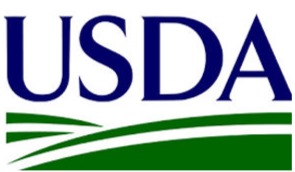USDA Agriculture Trade Retaliation Mitigation Package

USDA Trade Aid package details announced
U.S. Secretary of Agriculture Sonny Perdue has announced details of actions the U.S. Department of Agriculture (USDA) will take to assist farmers in response to trade damage from unjustified retaliation by foreign nations.
Package Details and FAQ's
- USDA’s Farm Service Agency (FSA) will administer the Market Facilitation Program (MFP) to provide payments to corn, cotton, dairy, hog, sorghum, soybean, and wheat producers starting September 4, 2018. An announcement about further payments will be made in the coming months, if warranted.
- USDA’s Agricultural Marketing Service (AMS) will administer a Food Purchase and Distribution Program to purchase up to $1.2 billion in commodities unfairly targeted by unjustified retaliation. USDA’s Food and Nutrition Service (FNS) will distribute these commodities through nutrition assistance programs such as The Emergency Food Assistance Program (TEFAP) and child nutrition programs.
- Through the Foreign Agricultural Service’s (FAS) Agricultural Trade Promotion Program (ATP), $200 million will be made available to develop foreign markets for U.S. agricultural products. The program will help U.S. agricultural exporters identify and access new markets and help mitigate the adverse effects of other countries’ restrictions.
- CROPS - Soybeans, Sorghum, Wheat, Corn
- LIVESTOCK - Dairy, Hogs
Who (Eligibility):
Crops - 2018 Actual Harvested Production.
- Recognize there have been crop losses/reduced yields in parts of State, MFP payments will be made only on actual bushels harvested. (Yield loss due to weather- events should be covered by crop insurance.)
- Acreage reports for crop commodities are required.
- Must be in compliance with HELC/WC provisions.
- Producers not currently enrolled in MPP can participate in MFP and establish production history.
- Must have ownership interest and be actively engaged in farming Average AGI cannot exceed $900,000. (Tax years 2014, 2015, 2016)
- Soybeans $1.65 per bushel
- Sorghum $0.86 per bushel
- Wheat $0.14 per bushel
- Corn $0.01 per bushel
- Dairy $0.12 per cwt MFP
- $125,000 for crops
- $125,000 for dairy and hogs
- Does not count against pay limits established under the 2014 Farm Bill.
- Payment limits will be calculated based on payments made directly to a "live body" regardless of partnerships the person is involved in. Each PERSON, not LLC, LLP, etc, will have a limit of $125K for crops and $125K for eligible livestock.
When:
MFP Signup - September 4, 2018 to January 15, 2019.
- Signup starts Tuesday, September 4, 2018.
- Folks in the FSA office have asked us to suggest that those looking to complete MFP paperwork for crops only to wait until October 1st.
- Final date to apply is Tuesday, January 15, 2019
How:
Producers will have multiple options to complete the necessary paperwork.
- In person
- By mail (must be postmarked by January 15, 2019)
- Electronically: The CCC-910 Application is available to the public at http://www.farmers.gov/MFP
- Every effort should be made to utilize the MFP application portal available at www.farmers.gov/MFP to apply for MFP benefits and to report production.
- Fax, scan, or emailed
Only one application per producer is needed for all commodities and livestock.
- Part C completed after harvest.
- Part D must be signed before January 15, 2019.
- Producers do NOT have to supply production evidence or request measurement service when filing an application, but do need to inform county office what type of evidence they have.
- County offices will perform a certain number of spot checks so producers will need to provide evidence if requested.
Frequently asked questions regarding beef's position within this package:
- In fact, beef exports are near record levels. Beef export value averaged $313.56 per head of fed slaughter in June, up 19 percent from a year ago. The first-half average was $316.94 per head, up 18 percent. Strong June results capped a huge first half of 2018 for U.S. beef exports, according to data released by USDA and compiled by the U.S. Meat Export Federation (USMEF). Beef muscle cut exports set a new volume record in June of 90,745 metric tons (mt), up 15 percent from a year ago. When adding variety meat, total beef export volume was 115,718 mt, up 6 percent, valued at $718.4 million – up 19 percent year-over-year and only slightly below the record total ($722.1 million) reached in May. First-half exports set a record pace in both volume and value as international customers bought a larger share of U.S. beef production at higher prices, indicating strong demand. Export volume was up 9 percent from a year ago to 662,875 mt while export value was just over $4 billion, up 21 percent. In previous years, export value never topped the $4 billion mark before August.
Answer: The Trade Promotion Program will work to restore lost markets develop new export markets for our nation’s farm products. This portion of MFP is where I see beef getting the most benefit. Groups like the US Meat Export Federation are great at working with foreign markets and this additional pool of funds will help their efforts. $200 million will go for market promotion efforts through ATP. The Agricultural Trade Promotion Program (ATP) will help U.S. agricultural exporters develop new markets and will help mitigate the adverse effects of other countries’ tariff and non-tariff barriers. The ATP provides cost-share assistance to eligible U.S. organizations for activities such as consumer advertising, public relations, point-of-sale demonstrations, participation in trade fairs and exhibits, market research, and technical assistance.
Posted: August 31, 2018








